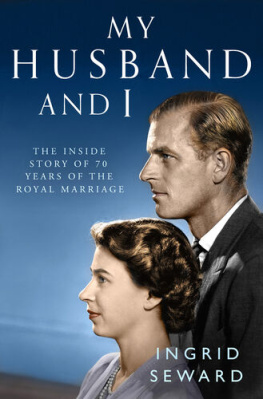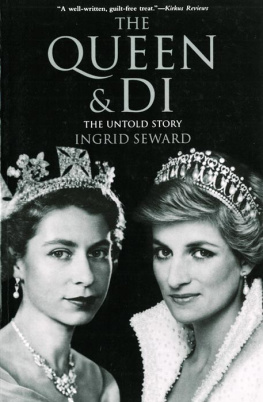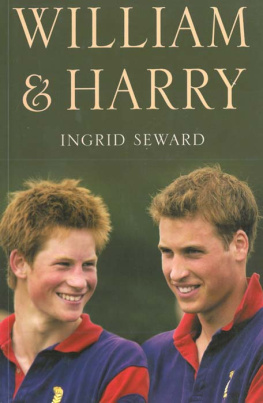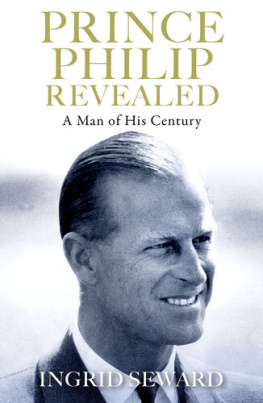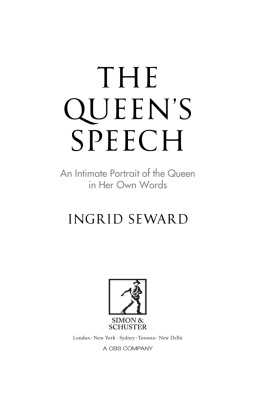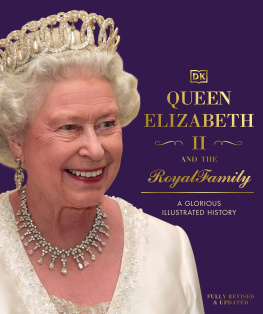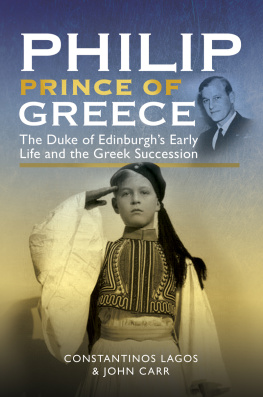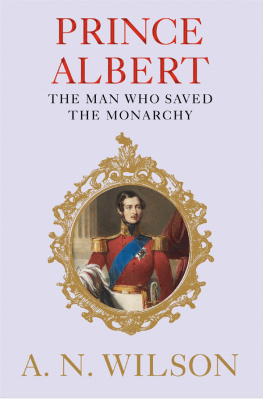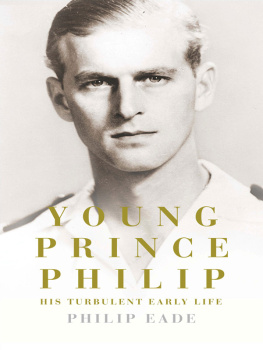Contents
Guide
Also by Ingrid Seward
By Royal Invitation
Royalty Revealed
Diana: An Intimate Portrait
Sarah: Duchess of York
Royal Children of the Twentieth Century
Prince Edward: A Biography
The Last Great Edwardian Lady
The Queen and Di
William and Harry
William & Harry: The Peoples Princes
Diana: The Last Word
The Queens Speech
My Husband and I
First published in Great Britain by Simon & Schuster UK Ltd, 2020
Copyright Ingrid Seward, 2020
The right of Ingrid Seward to be identified as the author of this work has been asserted in accordance with the Copyright, Designs and Patents Act, 1988.
Simon & Schuster UK Ltd
1st Floor
222 Grays Inn Road
London WC1X 8HB
www.simonandschuster.co.uk
www.simonandschuster.com.au
www.simonandschuster.co.in
Simon & Schuster Australia, Sydney
Simon & Schuster India, New Delhi
The author and publishers have made all reasonable efforts to contact copyright-holders for permission, and apologise for any omissions or errors in the form of credits given. Corrections may be made to future printings.
A CIP catalogue record for this book is available from the British Library
Hardback ISBN: 978-1-4711-8352-2
(Trade) Paperback ISBN: 978-1-4711-8353-9
eBook ISBN: 978-1-4711-8354-6
For Nicky and James
Prologue
I first met the Duke of Edinburgh in the late 1970s. He was in his mid-fifties and no longer the dashing polo-playing prince, simply a man in a suit. I was one of a group of girls involved raising monies for a theatre of which Prince Philip was a patron and we went backstage afterwards to meet him. He was charming, polite and funny, and only now when looking back do I realise how wary he must have been of being photographed with a bunch of young girls.
The next time I met him was in Amman, in March 1984. I had moved on from PR and was working for Majesty magazine. He was with Queen Elizabeth on a state visit to the Hashemite Kingdom of Jordan as guests of King Hussein and Queen Noor. On the first afternoon there was a reception for the royal press core, of which I was one, to meet Queen Elizabeth and Prince Philip this was standard in those days.
As we walked into the British Embassy, all of us visiting media journalists and some of the heavy-hitting Middle East foreign correspondents lined up to shake hands as if we were at an old-fashioned wedding reception. I clearly remember the master of ceremonies calling out Ingrid Seward from Hanover Magazines, who then published Majesty. It was my first royal tour and I hadnt a clue what to do, so I just stuck around Michael Shea, Queen Elizabeths press secretary, who told me where to stand and wait to be introduced to the Queen.
Before this happened I was approached by an equerry who said to me, His Royal Highness the Duke of Edinburgh would like to meet you. I nodded vaguely and, before I could do anything, Prince Philip walked up to me and asked me in his crisp, dry voice if I was German. I suppose with a name like Ingrid and working for an organisation called Hanover Magazines it was a possibility. As soon as I replied in the negative, he turned on his heel and walked away.
I was humiliated I couldnt understand what I had done, but I later learned it was standard behaviour for the duke. According to behavioural psychologists, people in a position of power such as Prince Philip frequently dont terminate a meeting properly. They just walk away if they are not interested. They know people only want to talk to them because of who they are, not as a real person, so they have no sensitivity towards the other individuals feelings.
Years later, when I was introduced to the duke again, this time by his then private secretary and friend Brian McGrath, at a small party in the grounds of Home Park during the Windsor Horse Show, he looked straight at me and walked away without uttering a word. Brian, looking flustered, came over to apologise, saying that the duke had thought I was from the Daily Mirror not Majesty magazine, which was why he had walked away. I met him again a few days later, when perhaps he had been briefed I was not from a tabloid newspaper, and we had what I imagined he would think was a civilised conversation about carriage driving. Realising I was not the enemy, he was charm personified and put me in touch with his head groom, at that time David Muir. He had allowed David to take me out with his carriage ponies so I could see for myself what it was like.
I still couldnt quite believe it when I found myself sitting on the Balmoral tartan-covered box seat being driven from the Royal Mews to the showground at Windsor with the Queens four Fell ponies pulling us along. With Windsor Castle behind us, we clopped past the carefully trimmed lawns and flowering trees to Home Park and the nine-hole golf course where Prince Andrew used to practise his golf swing. We trotted beside the river Thames and the railway track on to the showground where it was much rougher, and when a train roared past the ponies quickened their pace, but they responded immediately when told to stop. I used the moment to ask David Muir about his boss.
People that dont know the duke are intimidated by him, Muir admitted. It can be like the parting of the Red Sea. As the duke walks up everyone stands back, but if you are honest with him, he is honest with you. He can spot a fake a mile away.
I have seen him dancing at the Squadron Ball at Cowes, expertly wrapped around Penny Romsey (now Countess Mountbatten of Burma) without a care about who would see them, so I presumed rightly or wrongly it was totally innocent. I have seen him being unpleasant and brusque, but I have also seen him lifting little children out of a crowd and over a barrier so they can give the Queen a posy. I have seen him feeding sugar lumps to his ponies after they have competed in a marathon.
With his intellectual rigour goes a great generosity of spirit. Practically everyone who has worked for him has unqualified affection for him, even though he continually shouts at them. He also has a capacity for intense dislike: of the press, his critics and fools. His best relationships are those based on mutual respect such as he has for the Queen, his daughter, the Princess Royal, and his youngest son, the Earl of Wessex. He is also surprisingly unstuffy, although he has more blue blood running through his veins than his wife, the Queen.
According to Major General Sir Michael Hobbs, a former director of the Duke of Edinburgh Award who has worked with the duke since 1988: He is reserved by nature and not a demonstrative man. He meets discomfort absolutely head on and isnt worried by it. He is a loner, utterly happy within himself.
The duke claimed it was his mentor, Kurt Hahn, who persuaded him to become involved with the award: Kurt Hahn came along one day and he sent for me and I went to see him at Browns Hotel, where he always stayed, and he said, Boy, I want you to start an awards scheme.
I said, Thanks very much! We had a badge scheme at Gordonstoun and if you qualified throwing and running and jumping, you got a badge for it. I said, I cant start it, but if you put together a committee of the great and the good, I am perfectly happy to chair it, which is what happened.
Philips relationship with Kurt Hahn was forged in the crucible of Gordonstoun School, where, under Hahns tutorship, Philip developed his adult self. Because of his respect for Hahn, anything the elder man needed, Philip would consider very carefully. His dream was that one day the award that bears his name wouldnt be necessary. It was a genuinely altruistic dream, and he believed and hoped it would become part of the development process of young people, said Michael Hobbs.

